
Mitsubishi Mirage Hatchback review
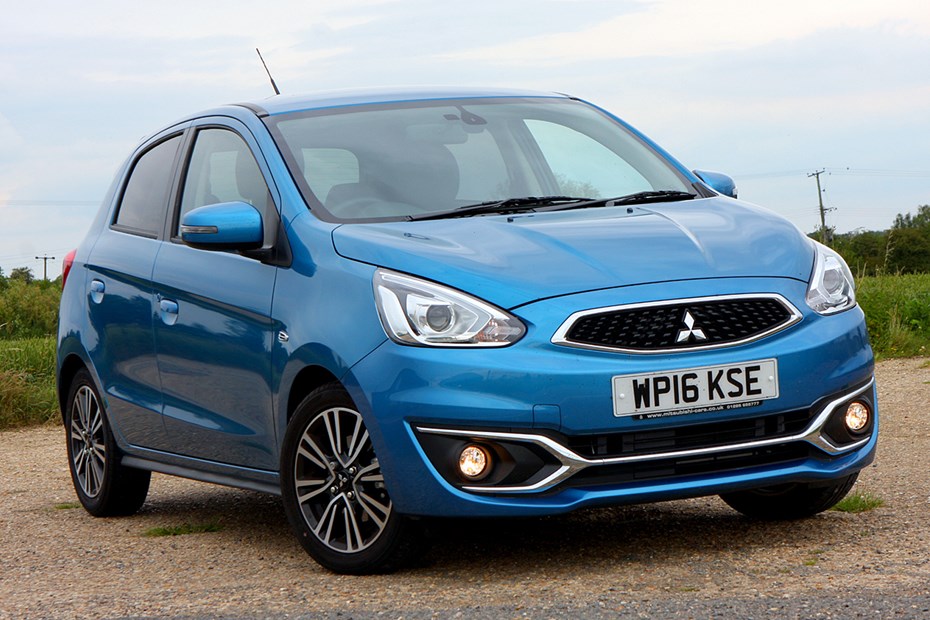
At a glance
| Price new | £9,054 - £14,705 |
|---|---|
| Used prices | £1,379 - £12,771 |
| Road tax cost | £0 - £190 |
| Insurance group | 14 - 21 |
Get an insurance quote with

|
|
| Fuel economy | 47.9 - 56.5 mpg |
| Range | 431 - 524 miles |
| Miles per pound | 7.0 - 8.3 |
| View full specs for a specific version | |
Available fuel types
Petrol
Pros & cons
- Excellent running costs
- Light weight
- Ultra-low emissions
- Drab interior
- Lower trim levels lack equipment
- Rivals offer better value
Mitsubishi Mirage (13-21) rivals
Overview
The Mitsubishi Mirage is the Japanese firm’s replacement for the Colt. It’s a ‘global car’, meaning that it’ll be for sale all over the world, yet built in just one factory in Thailand.
The thinking behind the five-door hatchback is that, as well as being well-suited to emerging markets further afield, it’ll also appeal to UK drivers looking to down-size and cut costs. As such, it’s very much at the cheap and cheerful end of the automotive market.
While it looks neat and modestly attractive on the outside, if perhaps not all that exciting, its sparsely-finished cabin is quite a plain, grey place to be. Entry-level models don’t come with a whole lot of kit, but the range topping Mirage 3 derivative comes with a more reasonable level of equipment including alloy wheels, keyless entry and parking sensors. That said, it doesn’t get Bluetooth connectivity, a real essential these days.
Free road tax
The Mirage’s real strength lies in its running costs. Thanks to small engines and slippery aerodynamics, all versions in the range emit less than 100g/km of CO2. This means that all Mirages currently qualify for free road tax and exemption from the London Congestion Charge.
Emissions are also kept in check by a low kerbweight of just 845kg. For perspective, the lightest Ford Fiesta weighs over 1,000kg. Other measures taken to save fuel and reduce emissions include stop/start, regenerative braking and low-friction tyres.
Although it’s small on the outside (at 3710mm long it’s 259mm shorter than a Ford Fiesta and 352mm shorter than a Renault Clio), it has more interior space than the larger Colt it replaces thanks to its all-new platform design. Its cabin space makes up 65 per cent of the overall length of the car and it’ll fit five adults in relative comfort.
A pair of petrol engines
There’s a choice of two engines for the Mirage. Both are three-cylinder petrol units – a 1.0-litre and a 1.2-litre. The former has 70bhp and is available with a five-speed manual gearbox only. It will take the Mirage from 0 to 62mph in 13.6 seconds, but more importantly it’s also capable of CO2 emissions of 96g/km and a claimed 67mpg on the combined cycle.
Most Mirages sold will be fitted with the 1.2-litre engine, however, which is available with either a five-speed manual gearbox or an automatic CVT, or Continuously Variable Transmission. In manual configuration the 79bhp engine gives the Mirage a quicker 0-62mph time of 11.7 seconds while also emitting 96g/km of CO2 and achieving a claimed 68.9mpg on the combined cycle. The automatic version is actually the cleanest of the lot, emitting 95g/km.
Small turning circle
The Mirage has been given a soft suspension setup which lends it a relaxed ride on urban roads, although it can lurch around a fair bit on bumpy country roads. It has a very small turning circle too, boosting its credentials as a city runabout.
The small hatchback market is a tough place to be, and although Mitsubishi cites the Nissan Micra, Kia Picanto and Chevrolet Spark as its rivals, its pricing also puts it in the line of such strong competitors as the Volkswagen Up and low-end versions of the UK’s best-selling car, the Ford Fiesta.



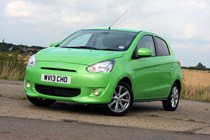
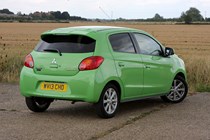
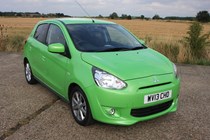
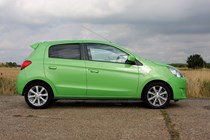
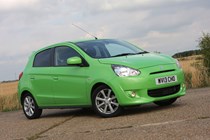
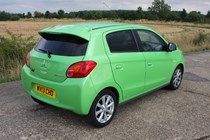
.jpg)
.jpg)
.jpg)
.jpg)
.jpg)
.jpg)
.jpg)
.jpg)
.jpg)
.jpg)
.jpg)
.jpg)
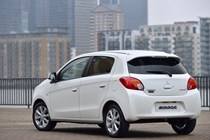
.jpg)

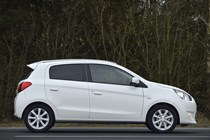
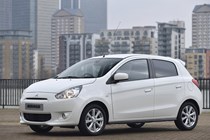
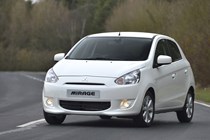
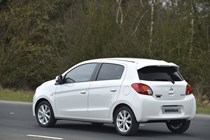
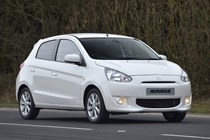
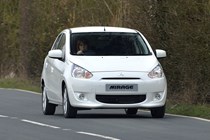
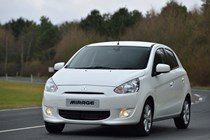
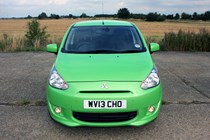
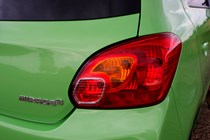
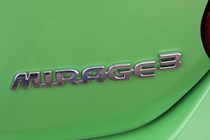
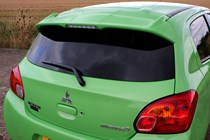
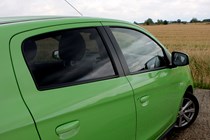
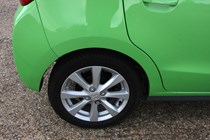
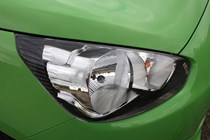
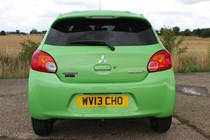
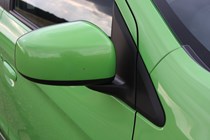
.jpg)
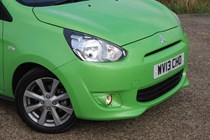
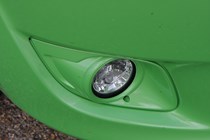
.jpg)
.jpg)
.jpg)
.jpg)
.jpg)
.jpg)
.jpg)
.jpg)
.jpg)
.jpg)
.jpg)
.jpg)
.jpg)
.jpg)
.jpg)
.jpg)
.jpg)
.jpg)
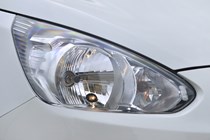
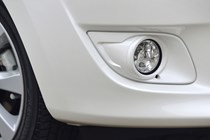
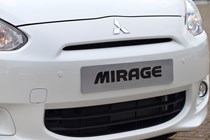
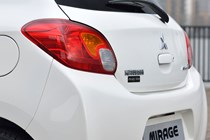
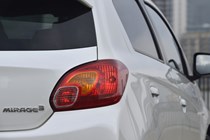
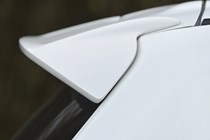
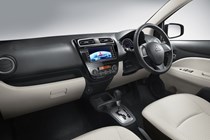
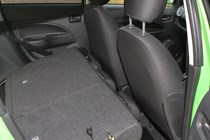
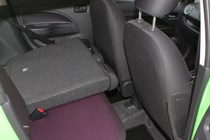
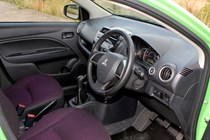
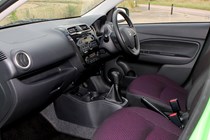
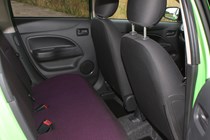
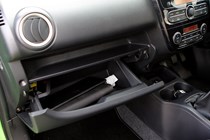
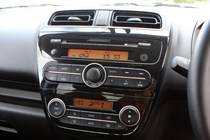
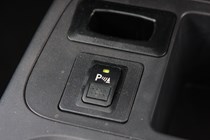
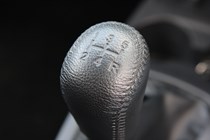
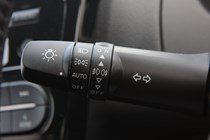
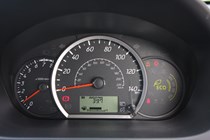
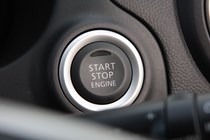
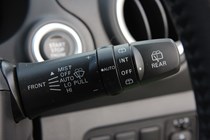
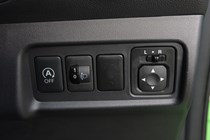

.jpg)
.jpg)
.jpg)
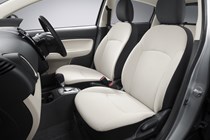
.jpg)
.jpg)
.jpg)
.jpg)
.jpg)
.jpg)
.jpg)
.jpg)
.jpg)
.jpg)
.jpg)
.jpg)
.jpg)
.jpg)
.jpg)
.jpg)
.jpg)
.jpg)
.jpg)
.jpg)
.jpg)
.jpg)
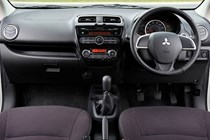
.jpg)
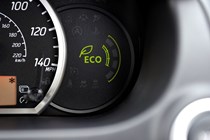
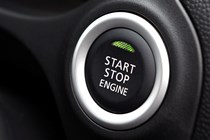
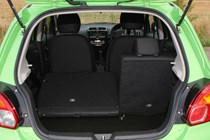
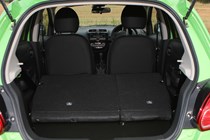
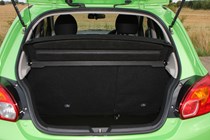
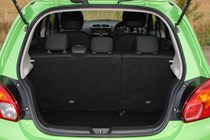
.jpg)
.jpg)
.jpg)
.jpg)
.jpg)
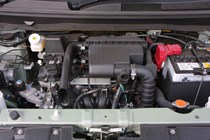

.jpg)
.jpg)
.jpg)
.jpg)
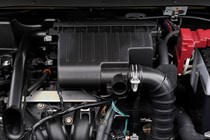
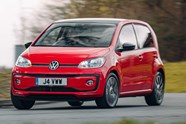
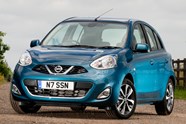








.jpg?quality=50)
.jpg?quality=50)
.jpg?quality=50)
.jpg?quality=50)
.jpg?quality=50)
.jpg?quality=50)
.jpg?quality=50)
.jpg?quality=50)
.jpg?quality=50)
.jpg?quality=50)
.jpg?quality=50)
.jpg?quality=50)

.jpg?quality=50)

















.jpg?quality=50)


.jpg?quality=50)
.jpg?quality=50)
.jpg?quality=50)
.jpg?quality=50)
.jpg?quality=50)
.jpg?quality=50)
.jpg?quality=50)
.jpg?quality=50)
.jpg?quality=50)
.jpg?quality=50)
.jpg?quality=50)
.jpg?quality=50)
.jpg?quality=50)
.jpg?quality=50)
.jpg?quality=50)
.jpg?quality=50)
.jpg?quality=50)
.jpg?quality=50)






















.jpg?quality=50)
.jpg?quality=50)
.jpg?quality=50)

.jpg?quality=50)
.jpg?quality=50)
.jpg?quality=50)
.jpg?quality=50)
.jpg?quality=50)
.jpg?quality=50)
.jpg?quality=50)
.jpg?quality=50)
.jpg?quality=50)
.jpg?quality=50)
.jpg?quality=50)
.jpg?quality=50)
.jpg?quality=50)
.jpg?quality=50)
.jpg?quality=50)
.jpg?quality=50)
.jpg?quality=50)
.jpg?quality=50)
.jpg?quality=50)
.jpg?quality=50)
.jpg?quality=50)
.jpg?quality=50)

.jpg?quality=50)






.jpg?quality=50)
.jpg?quality=50)
.jpg?quality=50)
.jpg?quality=50)
.jpg?quality=50)


.jpg?quality=50)
.jpg?quality=50)
.jpg?quality=50)
.jpg?quality=50)
